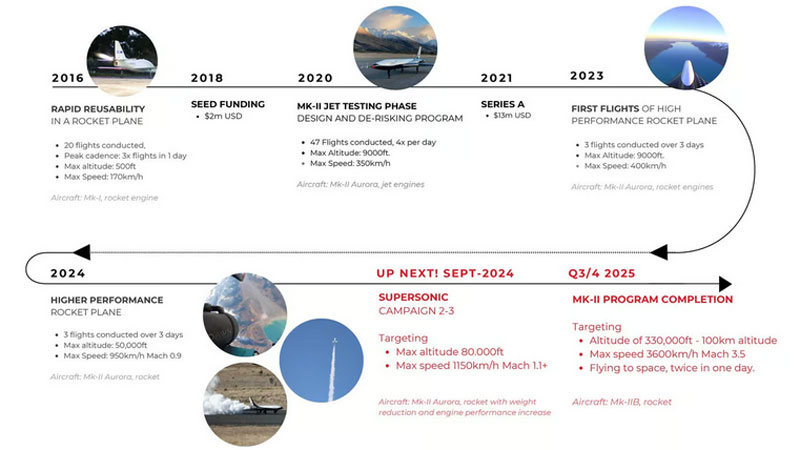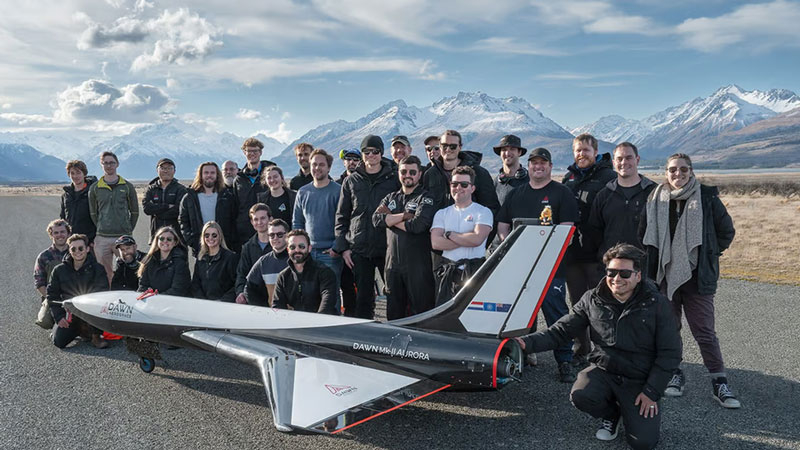The New Zealand company Dawn Aerospace announced a new test cycle of the prototype Mk-II Aurora spaceplane with a kerosene and hydrogen peroxide rocket engine. The prototype exceeded the previous speed and lifting heights by 3 and 5 times, respectively. It has accelerated to almost the speed of sound and will soon have to overcome it in order to someday support up to two payload launches per day into the stratosphere or into low orbit.

Image source: Dawn Aerospace
A year ago, the 4.5m long Mk-II Aurora spaceplane prototype could accelerate to just 315km/h and climb to 1,800m. But in its latest series of tests earlier this summer, the prototype climbed to 15,000m and achieved a speed of 0.9 Maha. There is nothing left before breaking the sound barrier. This will be done later by the Mk-IIA prototype, and the Mk-IIB prototype will reach hypersonic speeds.

Dawn Aerospace’s stated goal is to create a reusable vehicle for delivering small payloads to altitudes from 30 to 100 km, as well as launching up to 250 kg of payload into low Earth orbit if a disposable upper stage is used. The rocket-powered aircraft will be able to lift up to 900 kg of payload into the stratosphere. According to Dawn Aerospace, the declared altitude range is not covered by both balloons and satellites.

The company’s strategy is to gradually approach reusable payload delivery vehicles, mastering increasingly complex missions both in terms of cargo volume and altitude. The main advantage of the proposed approach and its implementation in the form of a spaceplane with an actual rocket engine is the ability to quickly prepare the vessel for re-launch. During the day, the spaceplane can make two full-fledged commercial flights.